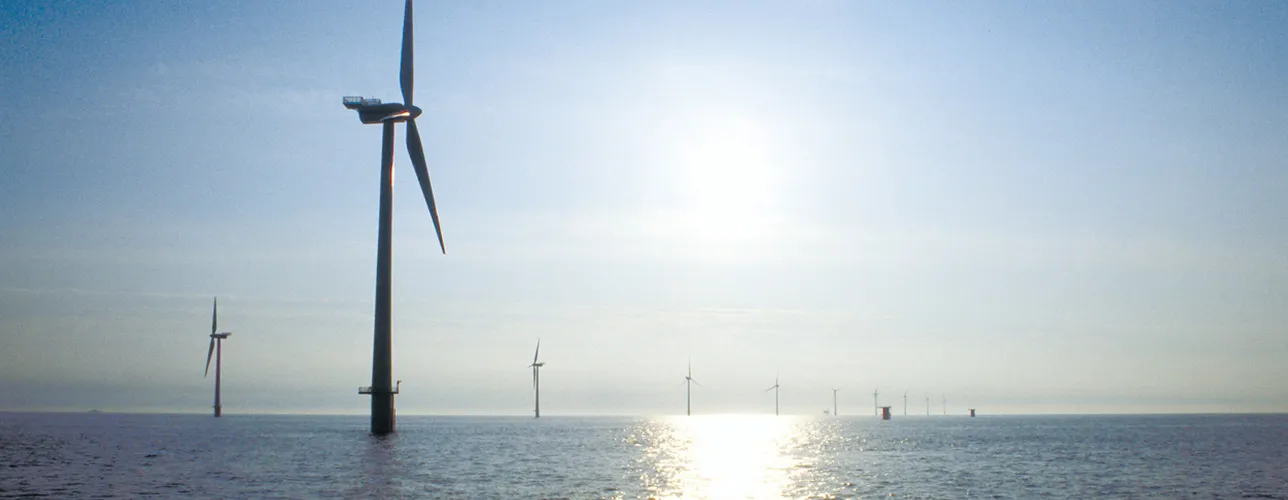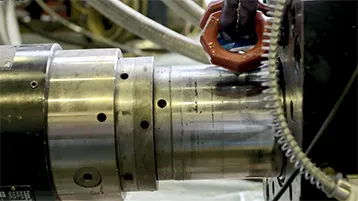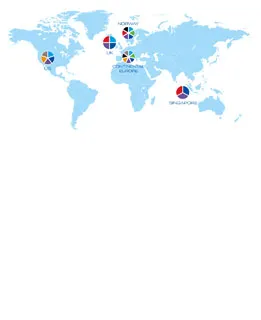Grouted jackets on pile foundations are widely used as support structures for offshore wind turbines. Knowing the effect that the ocean waves have on the grouted connection during the grouting operation is vital to scheduling the installation campaign to assure optimal long-term performance of the connections. With the strong growth in the offshore wind market, as forecasted by the DNV Energy Transition Outlook, the number of offshore wind operations is only set to increase in the coming years. Developers and investors are looking to maximizing investment return while ensuring long term reliability of their assets.
The connection between jacket leg and pile, typically referred to as jacket/pile connection, relies on high-strength grout filling the annulus between jacket legs and piles (Figure 1). During installation, grout is pumped into the connection. As grout gains strength, wave-induced relative movements between jacket and piles, a phenomenon referred to as Early Age Cycling (EAC), occur. If excessive, these movements could be detrimental to the performance of the connection which is critical for the integrity of the overall structure.
For an offshore wind farm, where a large number of jacket installation operations may be performed, finding the optimal installation weather window is critical due to its significant impact on schedule and costs. Understanding the effect of movements in the early phases of grout curing and their effect on the capacity of the grouted connection is paramount to find this “sweet spot”.
To meet the market need, DNV has developed a unique test programme to evaluate the effect of EAC. By using a state-of-the-art control system to simulate wave-induced relative movements between jacket leg and pile, the impact of these movements on the fatigue capacity of the grouted connection subsequently established. This large scale testing is performed at our structural laboratory located in Høvik outside Oslo in Norway.
In step one of the qualification programme, our experts make a detailed pre-study assessment of the project data and develop a test programme customized to each connection design, type of grout and metocean conditions. Purpose-built fixtures are procured.
In step two, large scale testing is performed to assess the influence of EAC on the capacity of the connection. The effect of axial and transverse relative displacements is considered through structural testing, destructive and non-destructive material testing, and visual and microscopic inspection. The grout response due to EAC is effected by grout properties at an early age, which is very dependent on environmental conditions and the mixing and placing of the material. DNV’s strong competence on grout material is key to ensuring that the grout at the laboratory is representative of the grout offshore.
Finally, conclusions on the impact of EAC on the grouted connections, which can be readily used in a design, are drawn. As these connections are mostly designed to DNV's suite of standards, we are well-positioned to interpret the laboratory test results as they relate to our standards.
“Experience leads us to recommend that this qualification testing is done as early as possible in the installation project,” said Rikard Törnqvist, Senior Principal Engineer. “This would usually be after the design of the grouted connection is finalized and candidate grout suppliers have been identified. It is still a fact that testing tends to be done close to installation and ends up on the critical path. Our experience and proven procedures allowing us to meet tight deadlines are therefore critical.”
The DNV approach developed for the wind industry builds on decades of experience tackling similar challenges for oil and gas offshore installations. DNV is adapting the approach to tackle larger wind turbines, deeper and more demanding weather and soil conditions.



